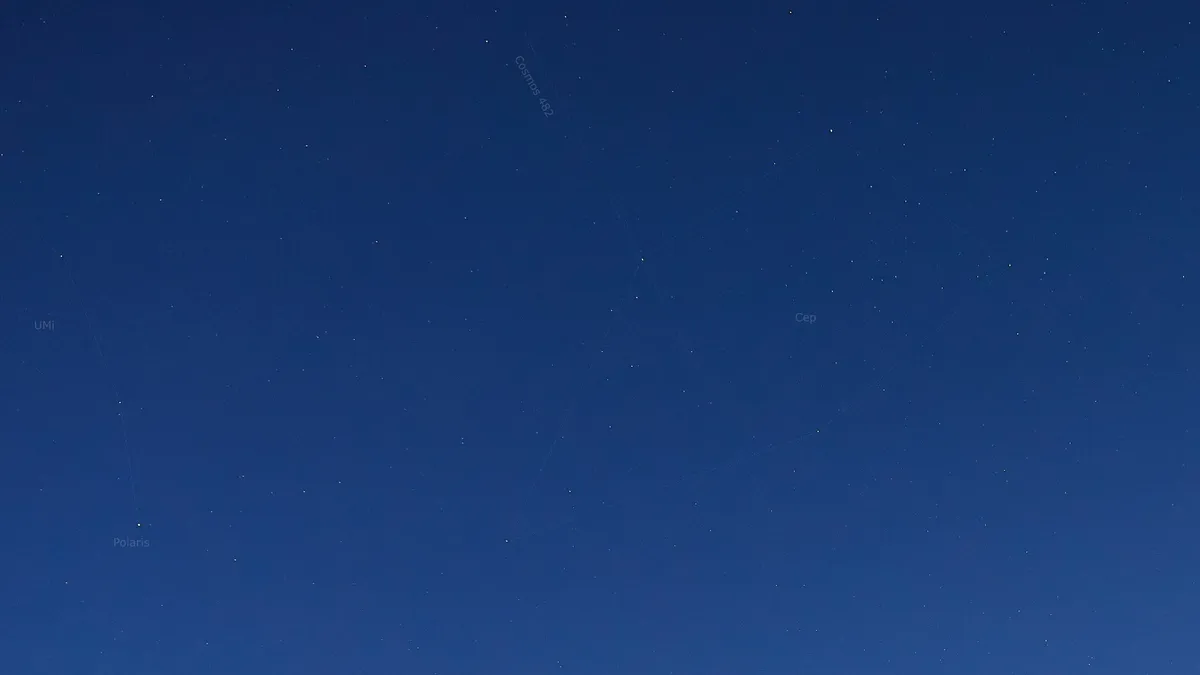
A significant chapter in space exploration has come to a close as the Kosmos 482 probe, a failed Soviet Venus lander, crashed back to Earth on May 10, 2023. This remarkable spacecraft had spent over five decades orbiting our planet before its reentry, which took place at 2:24 a.m. ET (0624 GMT or 9:24 a.m. Moscow time) over the Indian Ocean, west of Jakarta, Indonesia, as confirmed by Russia's space agency, Roscosmos. Fortunately, Kosmos 482 appears to have landed harmlessly in the sea.
In a stunning display of celestial photography, astronomer Gianluca Masi from the Virtual Telescope Project captured an image of Kosmos 482 during one of its final orbits as it passed over Rome, Italy, just before sunrise on May 10. The photograph depicts the probe as a bright trail entering the frame from the top, pointing toward the bottom right corner. Masi explained on his website that the image is a composite of four separate shots, which is why the trail of Kosmos 482 appears dashed.
Although Kosmos 482 has now fallen back to Earth, it was originally intended to explore Venus, Earth's hellishly hot sister planet. Launched in 1972 as part of the Soviet Union's Venera program, which aimed to send a fleet of probes to Venus during the 1960s, '70s, and early '80s, Kosmos 482 encountered a problem with its rocket shortly after launch. This malfunction stranded the spacecraft in an elliptical orbit around Earth instead of allowing it to fulfill its mission on Venus.
For the next 53 years, atmospheric drag gradually pulled the probe down, leading to its dramatic reentry. Unlike many large pieces of space debris, which typically disintegrate upon reentry, Kosmos 482's design was intended to withstand the high-speed journey through Venus' thick atmosphere. The probe, approximately 3.3 feet (1 meter) wide and weighing about 1,190 pounds (495 kilograms), likely hit the Earth's surface at a speed of about 150 mph (240 kph) if it survived reentry intact, according to Dutch satellite tracker Marco Langbroek.
The fall of Kosmos 482 highlights the escalating issue of space junk orbiting our planet. On average, three sizable pieces of debris crash back to Earth each day, and this number is expected to rise. As reported by the European Space Agency (ESA), there are approximately 14,240 satellites in Earth's orbit, with 11,400 of them currently active. A significant portion of these operational satellites belongs to SpaceX's Starlink broadband megaconstellation, which currently boasts around 7,200 satellites and continues to expand.
Moreover, new megaconstellations are under development, including Amazon's recently launched batch of spacecraft for its Project Kuiper broadband network, which aims to deploy 3,200 satellites. Additionally, two Chinese megaconstellations are in the works, each designed to accommodate at least 13,000 spacecraft. With the increase in space traffic, ESA officials have indicated that we should anticipate even more reentries in the future.
While the risk of injury or property damage from individual reentries is generally low—since much debris burns up upon reentry and the remaining fragments typically land in oceans or unpopulated areas—the rising frequency of reentries does elevate the chances of a destructive impact. As the volume of reentries increases, so too does the need for ongoing monitoring and management of space debris to ensure the safety of our planet and its inhabitants.